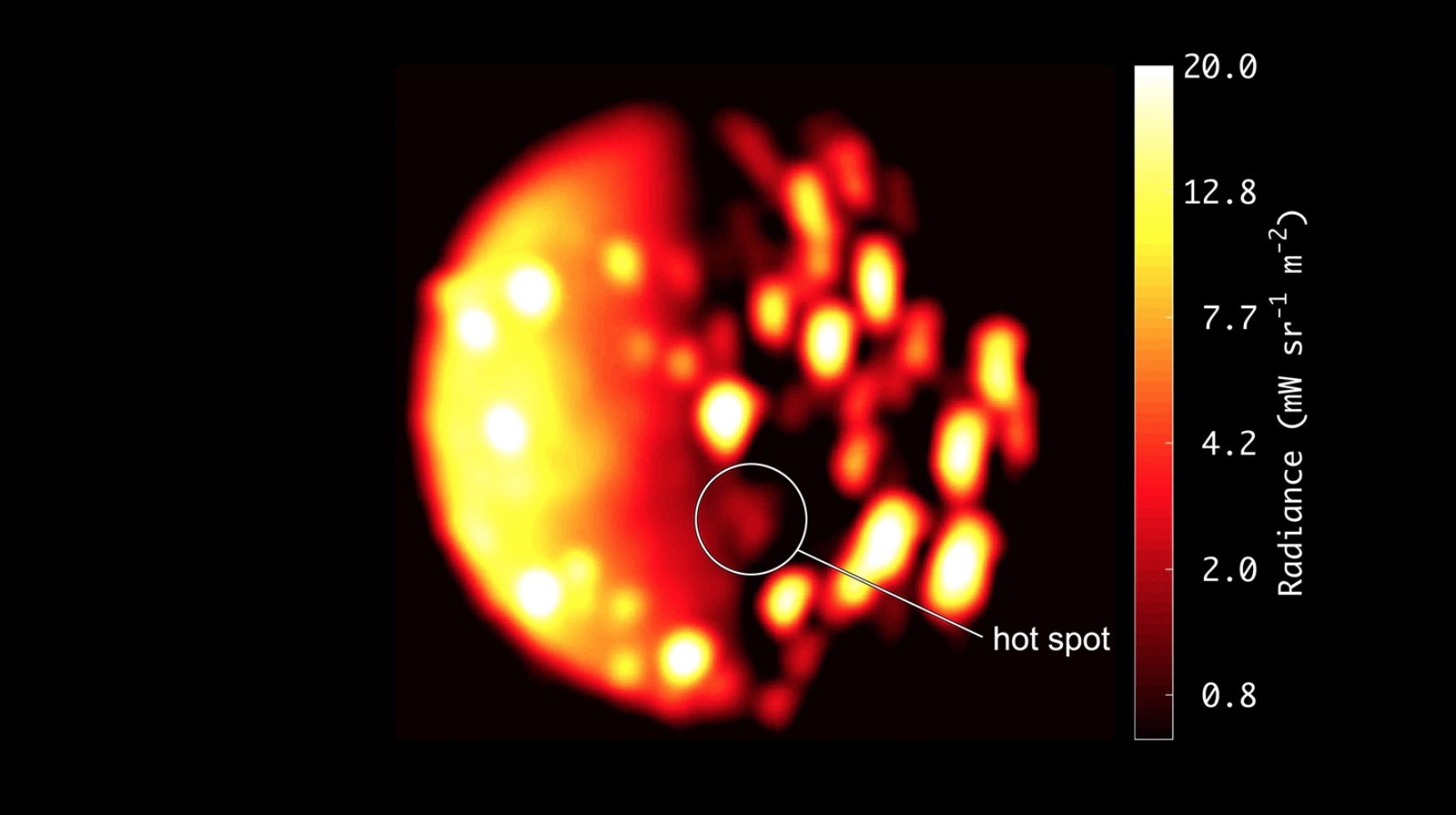
NASA's Jupiter-orbiting Juno spacecraft may have just boosted the already-impressive volcano tally on the gas giant's lava-spewing moon Io.
Juno's Jovian InfraRed Auroral Mapper instrument, or JIRAM, detected a sizable "hotspot" near Io's south pole on Dec. 16, 2017, during one of the probe's close Jupiter flybys. Juno was about 290,000 miles (470,000 kilometers) away from Io at the time, NASA officials said.
"The new Io hotspot JIRAM picked up is about 200 miles (300 kilometers) from the nearest previously mapped hotspot," Alessandro Mura, a Juno co-investigator from the National Institute for Astrophysics in Rome, said in a statement. [Amazing Photos: Jupiter's Volcanic Moon Io]
"We are not ruling out movement or modification of a previously discovered hotspot, but it is difficult to imagine one could travel such a distance and still be considered the same feature," Mura added.
Io is the most volcanically active body in the solar system, with its insides roiled and churned by Jupiter's powerful gravity and the tugs of its fellow Galilean satellites, Callisto, Ganymede and Europa. Thanks to the efforts of ground-based telescopes and NASA probes such as the Jupiter-orbiting Galileo and the Saturn-studying Cassini, astronomers have already mapped about 150 volcanoes on the moon, some of which blast lava 250 miles (400 km) out into space.
So, confirming a new Io volcano wouldn't come as much of a shock. Indeed, according to NASA officials, about 250 additional volcanoes likely await discovery on Io, which is the fourth-largest moon in the solar system. (With a diameter of about 2,260 miles, or 3,640 km, Io is slightly larger than Earth's moon.)
The $1.1 billion Juno mission arrived in orbit around Jupiter on July 4, 2016. The spacecraft loops around the gas giant on a highly elliptical path, making close flybys like the Dec. 16 encounter every 53 days. During these passes, Juno studies Jupiter's composition, structure, and gravitational and magnetic fields, looking for clues about the huge planet's formation and evolution (and also collecting a wealth of other data, as the Io observations show).
Get the Space.com Newsletter
Breaking space news, the latest updates on rocket launches, skywatching events and more!
Juno's next close science flyby of Jupiter occurs today (July 16).
The mission is scheduled to run through July 2021.
Follow Mike Wall on Twitter @michaeldwall and Google+. Follow us @Spacedotcom, Facebook or Google+. Originally published on Space.com.
Join our Space Forums to keep talking space on the latest missions, night sky and more! And if you have a news tip, correction or comment, let us know at: community@space.com.

Michael Wall is a Senior Space Writer with Space.com and joined the team in 2010. He primarily covers exoplanets, spaceflight and military space, but has been known to dabble in the space art beat. His book about the search for alien life, "Out There," was published on Nov. 13, 2018. Before becoming a science writer, Michael worked as a herpetologist and wildlife biologist. He has a Ph.D. in evolutionary biology from the University of Sydney, Australia, a bachelor's degree from the University of Arizona, and a graduate certificate in science writing from the University of California, Santa Cruz. To find out what his latest project is, you can follow Michael on Twitter.
